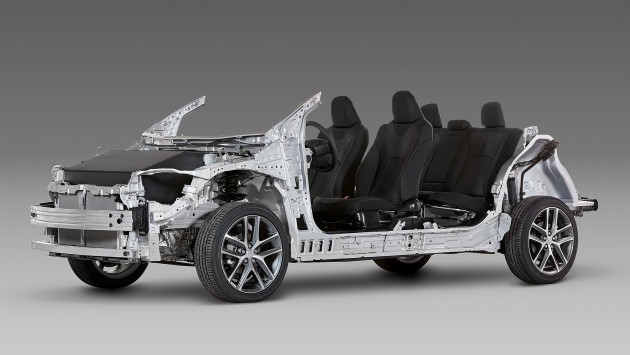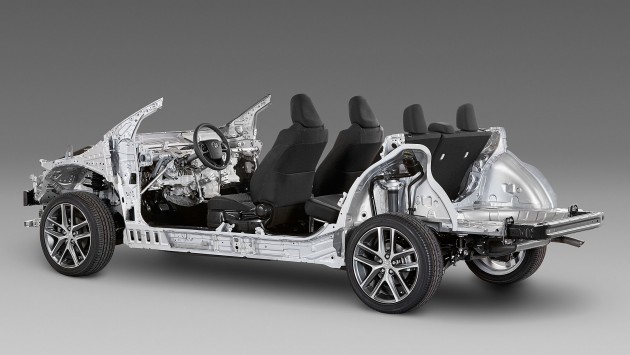
Toyota has announced a new modular product architecture on which it aims to build half of all its new models worldwide by the year 2020. The Toyota New Global Architecture (TNGA) has been developed to enable the Japanese multinational behemoth to more efficiently produce the myriad of different cars it sells across the globe that at the same time feature higher levels of performance and appeal than ever before.
Through this new initiative, Toyota aims to group vehicle development through the strategic sharing of parts and powertrain elements – reducing the consumption of its resources by over 20% – and work more closely with its suppliers to bring down costs, spending those savings on advanced technologies and increasing product appeal.
The new powertrains built on this new architecture will be around 25% more powerful than before while also delivering around 15% better fuel economy, thanks to improvements in thermal efficiency in the engines and energy relay efficiency in the transmissions. Hybrid systems will also be upgraded through a revamped drive unit layout and smaller motors, inverters and batteries, netting a 15% improvement in fuel consumption.
These engines and transmissions will be jointly developed with new platforms, which will feature improvements to the underbodies and suspension systems. Powertrain components will be repositioned to lower the centre of gravity, enabling future Toyotas to have more attractive low-slung designs, better handling and improved crash performance.

That's not all – redesigned body structures are set to increase overall rigidity by as much as 30-65%, with the implementation of laser screw welding technology to join body components expected to stiffen the shells still further.
The first car built on TNGA – a midsize front-wheel drive car – will be unveiled later this year, followed by dedicated new platforms for compact and large front-wheel drive cars, as well as rear-wheel drive vehicles.
Toyota has been working on improving production efficiency to strengthen its competitiveness – it froze the development of new plants in order to make full use of its existing facilities (it now utilises 90% of its global plants, up from 70% in 2009). It is also aiming to cut investment in the production in new models in half – and the initial investment in new plants by as much as 40% – from where these figures stood in 2008.


No comments:
Post a Comment